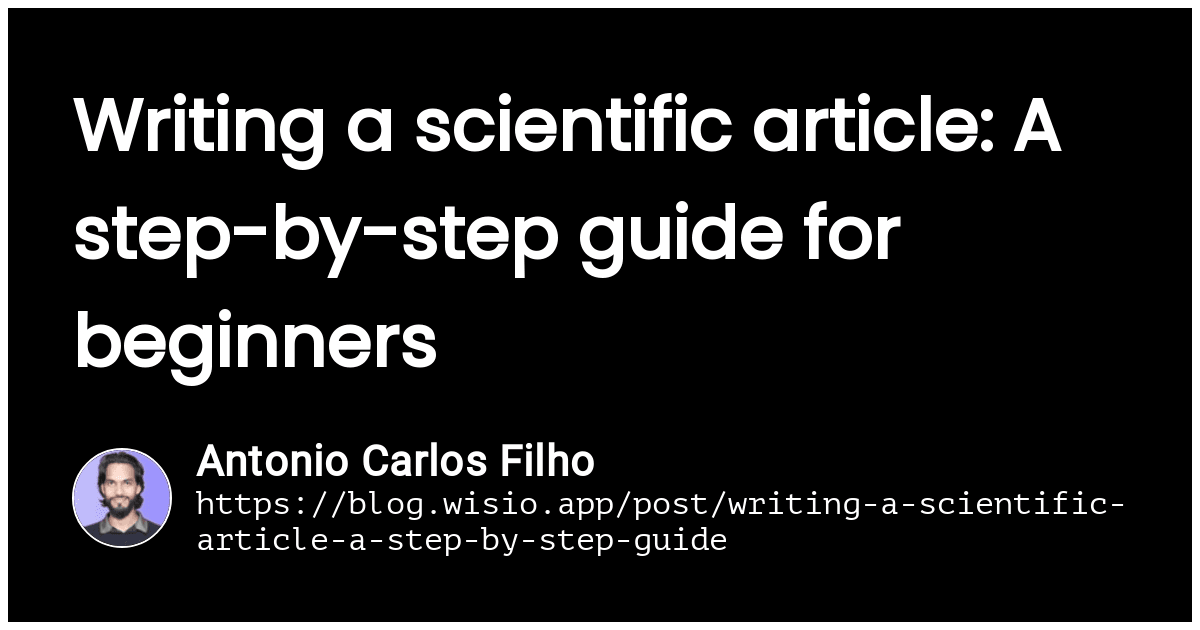Writing a scientific article: A step-by-step guide for beginners

In the world of academia, scientific articles play a crucial role in disseminating knowledge and findings to the scientific community. These articles enable researchers to share their discoveries, discuss their methodologies, and contribute to the advancement of their respective fields. As a beginner, you may find writing a scientific original article to be a daunting task, but with the right guidance, you can produce a high-quality, well-structured manuscript that will enhance your credibility and reputation in your field.
Scientific articles play a crucial role in disseminating knowledge and findings to the scientific community.
Pre-Writing Stage: Planning and Preparation
Before starting to write a scientific article, it is essential to plan and prepare. This includes choosing a topic, conducting a literature review, determining the research question or hypothesis, and identifying the target journal.
Choose a topic: The topic should be relevant to the research question or hypothesis and should be of interest to the target audience.
Conduct literature review: A literature review is a critical analysis of previous research related to the topic of the article.
Determine the research question or hypothesis: The research question or hypothesis should be clear, concise, and relevant to the topic.
Identify the target journal: The target journal should be selected based on the scope of the research and the audience it caters to.
Writing Stage: Drafting the Manuscript
Once the planning and preparation stage is complete, the actual writing of the manuscript can begin. This stage involves creating an abstract, outlining the article, and drafting the various sections of the article.
Create an outline: The outline should include the main sections of the article and their order.
Materials and methods: The materials and methods section should describe the study design, data collection, and analysis methods used.
Results: The results section should present the findings of the study and include figures and tables to support the findings.
Discussion: The discussion should interpret the results, explain their significance, and compare them to previous research.
Conclusion: The conclusion should summarize the main findings of the study and explain their implications.
Write the introduction: The introduction should provide background information on the topic, state the research question or hypothesis, and explain the significance of the research.
References: The references section should include a list of sources cited in the article.
Write an abstract: The abstract is a brief summary of the article and should include the research findings, methodology, and conclusions.
Acknowledgments: The acknowledgments section should thank individuals or organizations that provided support or assistance during the research.
Post-Writing Stage: Revising and Editing
After completing the initial draft of the manuscript, it is essential to revise and edit it for clarity, coherence, and accuracy.
Review the first draft: The first draft should be reviewed to identify areas that need improvement.
Revise the manuscript: The manuscript should be revised to address the issues identified in the review process.
Edit the language and grammar: The language and grammar of the manuscript should be edited to improve its readability.
Proofread the final draft: The final draft should be proofread to eliminate any errors.
Submitting Your Manuscript to a Journal
Once you have revised and edited your manuscript, it is time to submit it to a suitable scientific journal. To maximize your chances of acceptance, you should:
Identify target journals: Research journals in your field and select those that align with your research topic and have a high impact factor.
Follow submission guidelines: Carefully read the target journal's submission guidelines, ensuring that your manuscript adheres to their formatting, citation, and content requirements.
Write a cover letter: Craft a professional cover letter that briefly introduces your study, explains its significance, and highlights why it is a good fit for the target journal.
Be prepared for revisions: If your manuscript is accepted with revisions, carefully address the reviewers' comments and resubmit your manuscript in a timely manner.
Responding to Reviews and Revisions
After submitting the manuscript, it may be subjected to peer review. The author may be required to respond to reviewers' comments and revise the manuscript accordingly.
Responding to reviewers' comments: The author should respond to reviewers' comments constructively and professionally.
Revising the manuscript: The manuscript should be revised based on the reviewers' comments and suggestions.
Conclusion
Writing a scientific article can be a challenging but rewarding experience. By following the steps outlined in this guide, beginners can learn how to write a clear, concise, and effective scientific article in English.
If you're looking to improve your scientific writing skills, consider using wisio.app, an online platform where you can get personalized feedback on your writing from AI. With wisio.app, you can get feedback on the structure, content, and language of your manuscript, helping you to improve the quality of your scientific articles.
